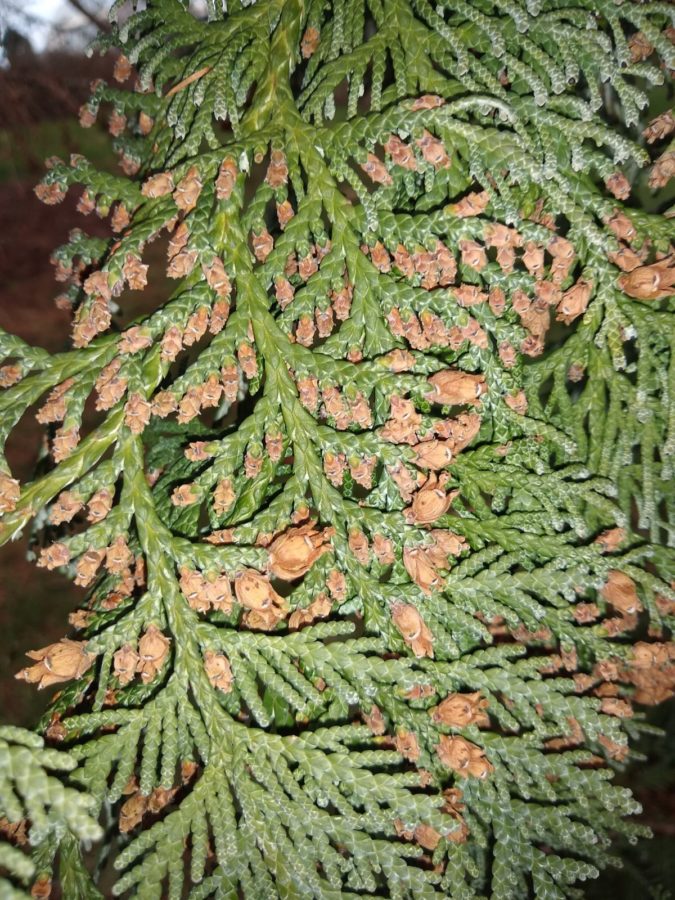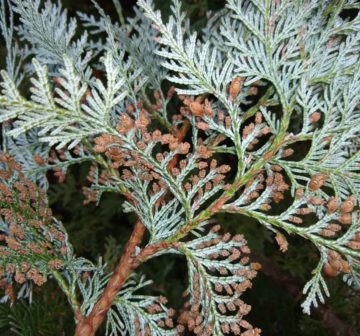Cupressaceae
Thuja standishii
A medium to large tree valued for its resinous, long lasting timber. Past exploitation has led to an assessment of Near Threatened.
Human Uses
The wood of this species is highly prized for special building purposes, e.g. ceilings and panelling, and is also used for furniture, fanlights and clogs (wooden shoes). It was in the past regarded as one of the 'five trees of Kiso' or 'Tome-ki' (preserved trees) which meant they were the property of the Emperors of the Tokugawa dynasty in the 17th and 18th centuries and not to be used by common people. This practice helped to preserved several forests from overexploitation at least until the end of World War Two when many forests were once again subject to a period exploitation in support of reconstruction.
It is widely planted in Japan as an ornamental and is also cultivated in temperate areas of Europe and North America.
References and further reading
- Carter, G. & Farjon, A. 2013. Thuja standishii. The IUCN Red List of Threatened Species 2013: e.T42264A2968225. http://dx.doi.org/10.2305/IUCN.UK.2013-1.RLTS.T42264A2968225.en. Downloaded on 18 July 2017
- Kitagawa, J., T. Fujiki, K. Yamada, H. Hoshino & Y. Yasuda 2016. Human impact on the Kiso-hinoki cypress woodland in Japan: a history of exploitation and regeneration. Vegetation History and Archaeobotany 23:649-664.
- Ministry of Environment 2012 Plant I (Vascular plant) Ministry of the Environment Fourth Red List (2012). https://ikilog.biodic.go.jp. Downloaded on 18 July 2017







